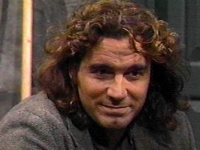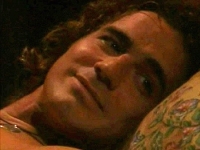


































Table of Contents
Section 1: History
- The Patrick Papers - The Original Images
- A History of Patrick Thornhart
- The One Life of Patrick Thornhart, His Youth
Section 2: Literature
- Professor Thornhart's Magical Literary Tour
- In Professor Thornhart's Classroom: Lesson One
- In Professor Thornhart's Classroom: Lesson Two
- Patrick's Notebook: Review
- A Poet To His Beloved: A Gallery Of Poetry
Section 3: Philosophy
Section 4: Creative
Writing
In Professor Thornhart's Classroom: Lesson Two
The cat went
here and there
And the moon spun round like a top
And the nearest kin of the moon,
The creeping cat, looked up.
W. B. Yeats

Literary Cats
With autumn and the fall semester comes the inevitable marketing of Halloween. Second only to the pumpkin as a symbol of Halloween is the black cat. Although the cat has long been associated with witchcraft, and witchcraft with Halloween, the only real relationship between the practice of witchcraft, the event of Halloween, and the animal known as the cat, is in their common demonization (for want of a better word! Another misunderstood concept) by western culture over the centuries.
Professor Thornhart doesn’t teach sociology, anthropology, or western civilization, women’s studies, or theology, so that issue may be discussed elsewhere. Still, because cats remain so stubbornly identified with Halloween (black cats in particular), it seems appropriate at this time of year to examine some assigned works of Victorian literature to see what cats may be found there. In this spirit (sorry), Professor Thornhart’s class has undertaken a lighthearted assignment - a search for cats in literature.
The image of the cat is actually ambiguous in literature, as in our society. On the one hand the cat’s independent nature is described as threatening and unearthly. Cats were put to death as witches’ familiars in the Middle Ages . . . On the other hand, there is almost no depiction that creates an illusion of cozy comfort and warmth more convincingly than that of a cat purring in one’s lap.
Let's check out these different perspectives as characterized by two literary greats.
Here are two passages from Charles Dickens’ Great Expectations that present the more nightmarish aspect of the feline. The language in both of these scenes emphasizes the sordid, with cats mentioned in passing as ordinary features of these repellent environments.
An old brick house, so dingy as to be all but black, standing by itself within a gateway. Before it, a square courtyard where a shrub or two and a patch of grass were as rank (which is saying much) as the iron railings enclosing them were rusty. Many years ago it had it in its mind to slide down sideways; it had been propped up, however, and was leaning on some half-dozen gigantic crutches: which gymnasium for the neighbouring cats, weather-stained, smoke-blackened, and overgrown with weeds, appeared in these latter days to be no very sure reliance.
All night there were coaches in my broken sleep, going to wrong places instead of London, and having in the traces, now dogs, now cats, now pigs, now men - never horses. Fantastic failures of journeys occupied me until the day dawned and the birds were singing. Then I got up and partly dressed, and sat at the window to take a last look out.
In contrast, this scene from Charlotte Brontë’s Jane Eyre is so inviting it draws readers right into the picture. No matter how stormy the night outside, having a cheerful fire crackling in the grate and a cat at one’s feet can do wonders to dispel the gloom.
A snug small room; a round table by a cheerful fire; an arm-chair high-backed and old-fashioned, wherein sat the neatest imaginable little elderly lady, in widow's cap, black silk gown, and snowy muslin apron; exactly like what I had fancied Mrs. Fairfax, only less stately and milder looking. She was occupied in knitting; a large cat sat demurely at her feet; nothing in short was wanting to complete the beau-ideal of domestic comfort.
"I am so glad,' she continued, as she sat down opposite to me, and took the cat on her knee; "I am so glad you are come; it will be quite pleasant living here now with a companion."
On All Hallow’s Eve, especially, I’d opt for the second scenario...wouldn’t you?



